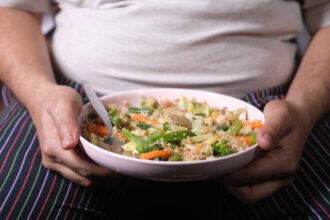Numerous theories exist regarding why mosquitoes are more attracted to some individuals while others remain largely unbitten. A research group from Virginia Tech published their findings in the journal iScience on May 10, revealing that certain soaps can either attract or repel mosquitoes, depending on the individual’s unique body odour combined with the soap’s effects.
Senior author and neuroethologist Clément Vinauger (@thevinaugerlab) highlighted the dramatic changes that can occur: “It’s astonishing how an individual who is highly attractive to mosquitoes without washing can become even more appealing with one type of soap, yet completely repulsive with another.”
Humans have utilised soaps and scented personal care products since ancient times, which are known to alter our perceptions of each other’s body odour. However, it remains to be seen how these products affect mosquitoes’ ability to differentiate between potential blood donors. Since mosquitoes primarily feed on plant nectar rather than blood, introducing plant-like or plant-derived scents could disrupt their decision-making process.
The study began by analysing the chemical odour profiles emitted by four volunteers, both in unwashed states and after using one of four different soap brands: Dial, Dove, Native, and Simple Truth. The researchers also examined the scent profiles of the soaps themselves.
The findings revealed that each volunteer had a distinct odour profile, with specific profiles attracting mosquitoes more than others. Washing with soap significantly altered these odour profiles by adding floral scents and modifying the emission of naturally occurring compounds.
“Everyone’s body odour is unique, and this uniqueness extends even after soap is applied. Factors like your physiological state, lifestyle, diet, and environment influence your scent,” explained co-author and biologist Chloé Lahondère. “Soaps dramatically change our scent by introducing chemicals and altering the natural emission of compounds.”
The researchers then assessed how attractive each volunteer was to Aedes aegypti mosquitoes, comparing their appeal when unwashed to their appeal an hour after using the soaps. The study focused on adult female mosquitoes that had recently mated, as only females feed on blood post-mating. They excluded the influence of exhaled carbon dioxide (CO2), another significant cue for mosquitoes, by conducting tests on fabric imbued with the volunteers’ scents rather than directly on their skin.
Results indicated that the impact of soap on mosquito preference varied not only between the different types of soap but also among the human volunteers. For instance, washing with Dove and Simple Truth soaps increased the attractiveness of some volunteers, whereas Native soap generally repelled mosquitoes.
Vinauger emphasised the importance of specific chemical associations and combinations: “For mosquitoes, it’s not about the most abundant chemical but the particular combinations of chemicals from the soap and our body odours.” Despite limonene, a known mosquito repellent, being a common ingredient in all tested soaps, three of the four soaps still increased mosquito attraction.
Lahondère added, “The ratios of chemicals are crucial in determining whether mosquitoes are drawn or repelled. Altering the ratio of the same chemicals can lead to attraction, indifference, or repulsion.”
To pinpoint the specific ingredients that either attract or repel mosquitoes, the team analysed the chemical compositions of the soaps and their effects on mosquito preference. They identified four chemicals linked to attraction and three to repulsion, including a coconut-scented chemical found in American Bourbon and a floral compound used in treating scabies and lice. These findings were used to create and test blends of attractive and repellent odours, significantly influencing mosquito preferences.
“With these mixtures, we’ve removed all extraneous elements in the signal, focusing only on those chemicals that statistics show are crucial for attraction or repulsion,” Vinauger noted. “If I wanted to reduce mosquito attraction, I would choose a coconut-scented soap.”
The research team plans to extend these studies by testing more varieties of soap and a more significant number of individuals, aiming to uncover broader patterns or rules. They are also interested in examining how the timing of soap application affects mosquito preference over a longer duration. “We’re particularly eager to see how long the effect lasts—whether a morning shower still influences mosquito attraction by the evening,” Vinauger concluded.
More information: Morgen VanderGiessen et al, Soap application alters mosquito-host interactions, iScience. DOI: 10.1016/j.isci.2023.106667
Journal information: iScience Provided by Cell Press








